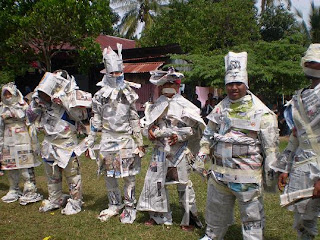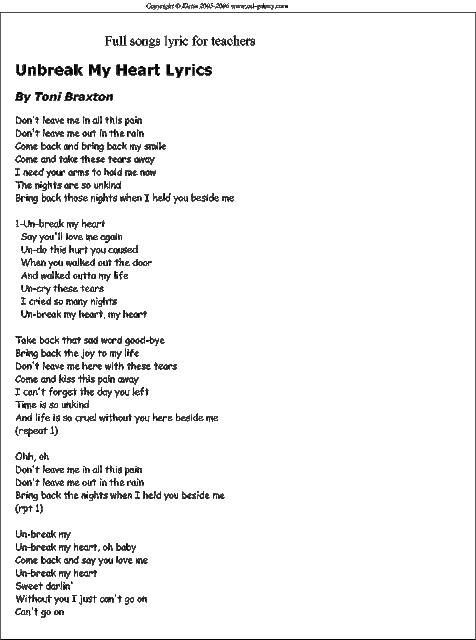Comic Strip Creations
Comic strips often express messages or provide brief glances of events or stories. Key elements of a comic strip include character, setting, and plot—all conveyed in a few frames through a combination of pictures, captions, and dialogue. Due to its condensed format, a comic strip highlights only the most important elements of its targeted topic. In this session, students will use character, setting, and plot to retell and make up their own version of story events using a comic strip format.
OBJECTIVE
Students will:
1. Analyze comic strips to identify characters, setting, dialogue, and plot
2. Create or reconstruct a sequence of events from the story
3. Organize ideas on how to combine pictures, captions, and dialogue to tell about a specific event or express a message
4. Develop comic strips to depict story-related or self-created events, convey a message, or express interesting information
DIRECTIONS
Step 1: Distribute the comic strips to small groups, or gather students around a computer, or use an LCD or other projection device to project the comic strips for the whole class to see. Working with one comic strip at a time, analyze with students how the comic-strip creator combined text, quotes, and images to tell a story or event or convey a message. Have students identify the characters, setting, and plot in each one. Point out any captions that appear and explain that these are often used to provide a brief narration or give additional information. Have students identify speech and thought bubbles in the examples, and tell how these devices are used: a speech bubble contains the character's spoken words while a thought bubble expresses the character's unspoken thoughts. Sum up this step by telling students that, due to limited space, comic strips focus on the main idea and the most important elements of the topic, event, or message to be communicated.
Step 2: Gather students around a computer, or use an LCD or other projection device to project the
Make Your Own Comics screen for the whole class to see. Then introduce the activity, review its object, and read the instructions together. Explain that students will choose from a number of characters, settings, and objects to create three-, five-, and six-frame comic strips. They can set up each frame and add captions, dialogue, and character thoughts to construct comic strips that recap the whole story, retell a part of the story, show a new version, depict a problem and its solution, share information, or express an opinion.
Before students begin the activity, review with them each of the sample pages. Discuss the characters, setting, and sequence of events in each sample. Ask students to identify the main idea of each comic strip and tell if and how it relates to the story.
Step 3: Go to the "Choose a Layout" screen and show students the two sets of layout templates. The templates in the top set of layouts are open-ended and allow students to create their own comic strips from start to finish. Each template in the bottom set includes a permanent image at the beginning or end of the strip. Students can construct a storyline with these to show what comes before or after the permanent image.
Step 4: To demonstrate how to construct a comic strip, choose a template and advance to the layout screen. Working through one element at a time, review all the images for characters, settings, objects, and bubbles. Show students how to click and drag the items to the comic frames and then use the command buttons at the top left to adjust the size, orientation, and position of the item. Explain that they should click the trash can to delete any unwanted items. Choose several kinds of bubbles, and demonstrate how to insert text in the bubbles. Point out that each bubble uses a specific size and kind of font.
Step 5: Have students work individually to create their own comic strips. Remind students that their layout choices consist of three-, five-, and six-frame comic strips. Have them decide which template they will use for their comic strip, and then use the appropriate graphic organizer to develop a plan for conveying the main idea and sequence of events for their topic. As they work out their plan, encourage students to also include which characters, setting, and other elements will be featured in each frame. Keep copies of the book on hand for students to refer to as needed.
Have students formulate a plan for at least one layout template containing a permanent image in the first or last frame. For this template, students will use the permanent image and text as a guide when planning the ideas, action, dialogue and other components of the comic strip. They should also create one or more plans for constructing comics with the open-ended templates.
Step 6: After planning the organization of their comic strips, invite students to the computer. Have them choose the selected layout from the bottom set of templates and then refer to their outline to construct the comic. After completing their comic strip, instruct students to review their work for correct spelling, grammar, and mechanics, as well as the presentation and clarity of ideas and events. Ask them to make revisions and then print out the piece to later share with classmates.
Step 7: Invite students to organize and create additional comic strips using the blank templates to reconstruct story events or make up their own events. They might also feature one or more characters to express an opinion or share a special message. For example, students might show a discussion between two animals on the subject of growing animals to use for food. After editing their own work, invite students to print out their completed comic strips.
Step 8: If students printed black-and-white copies of their comic strips, invite them to add a little color with markers or crayons. Then have them write their names on the back of their pages. Later, students can remove their comic strips and take them home to display or add to their own scrapbooks.
SUPPORTING ALL LEARNERS
Benchmarks:
Language Arts Standards (4th ed.)
- Uses prewriting strategies to plan written work (e.g., uses graphic organizers; brainstorms ideas; organizes information according to type and purpose of writing)
- Uses strategies to draft and revise written work (e.g., elaborates on a central idea; writes with attention to audience, word choice, sentence variation)
- Uses strategies to edit and publish written work (e.g., edits for grammar, punctuation, capitalization, and spelling at a developmentally appropriate level; selects presentation format according to purpose; incorporates photos and illustrations; uses technology to compose and publish work)
- Evaluates own and others' writing (e.g., determines the best features of a piece of writing, determines how own writing achieves its purposes, asks for feedback, responds to classmates' writing)
- Writes in response to literature (e.g., summarizes main ideas and significant details; relates own ideas to supporting details; advances judgments; supports judgments with references to the text, other works, other authors, non-print media, and personal knowledge)
LESSON EXTENSION
- Working in pairs, have students share with each other their versions of the comic strips that contained a permanent image in the first or last frame. Encourage them to find similarities and differences in how they depicted events, characters, and settings to complete the storyline.
- Copy and distribute copies of the blank layout templates. Invite students to create comic strips to tell about a personal experience, retell an event from a favorite book, or express a message. Collect the pages and display them with the title "Comic Strip Compositions."
- Invite students to structure and write an expanded story using their literature-based or personal comic strips as the starting point. Encourage them to revise their work based on feedback from self- and peer-edit reviews.
ASSESS STUDENTS
- Review each student's comic strips for content, clarity of ideas, and correct spelling, punctuation, and grammar.
-taken from:
http://www2.scholastic.com/browse/lessonplan.jsp?id=627 _
























